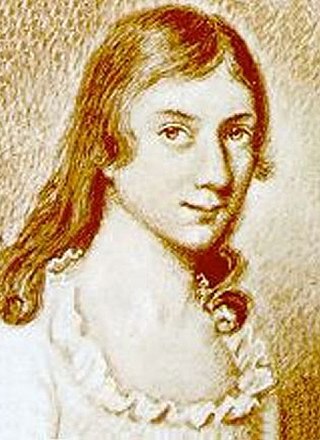Top Qs
Timeline
Chat
Perspective
Maria Branwell
Mother of the Brontë sisters (1783–1821) From Wikipedia, the free encyclopedia
Remove ads
Maria Brontë (née Branwell; 15 April 1783[1] – 15 September 1821) is best known as being the mother of English writers Emily Brontë, Anne Brontë, Charlotte Brontë and of their brother Branwell Brontë, who was a poet and painter. Maria married Patrick Brontë on 29 December 1812.
This article needs additional citations for verification. (January 2018) |
Remove ads
Early life

Maria Branwell was born on 15 April 1783 to Anne Carne (1743–1809) and Thomas Branwell (1746–1808) in Penzance, Cornwall.[2][3] Thomas Branwell was a successful merchant in groceries and luxuries, owning properties and farmland nearby. Anne Carne was the daughter of a Penzance silversmith and watchmaker. Maria was the eleventh of twelve children: six died by the time of her birth: seven survived to adulthood.[3]
The family was close to civic affairs: Thomas Branwell held public office as one of 12 "Assistants to the Corporation" (of the city). Maria's brother Benjamin also was a member of the corporation, and was elected mayor in 1809.[2][3]
The family were prominent Methodists. Thomas' sister and two of his daughters married clergymen of Wesleyan leanings: his sister Jane married John Fennell in 1790; his daughter Jane Branwell married John Kingston in 1800; and Maria married Patrick Brontë in 1812. The first Wesleyan Methodist chapel was built in Penzance in 1814, and the Branwells were instrumental in having this built.
Remove ads
Courtship and marriage
Summarize
Perspective
Maria met Patrick Brontë in 1812 when visiting her aunt Jane (her father's sister) and uncle John Fennell in Yorkshire after four family deaths between 1808 and 1812, including both of her parents. Maria moved to Yorkshire to help her aunt with the household management of a new Methodist training school. John Fennell, a former schoolmaster and Methodist class leader in Penzance and Wellington, Shropshire, was appointed headmaster of the newly opened Woodhouse Grove School at Rawdon, for the sons of Methodist ministers in 1812. Patrick, during his curacy in Wellington, had known John Fennell in Shropshire's Wesleyan circles.
When Fennell was invited to the Yorkshire headship, he needed external examiners for his students and invited Patrick to serve in that capacity at Woodhouse Grove. Maria and Patrick 'loved at first sight' and married within the year. They were married on 29 December 1812 at Guiseley Parish Church by mutual friend Reverend William Morgan, who, on the same day, married Jane and John Fennell's daughter, Jane Branwell Fennell.[4]

Befitting the close family that the Branwells were, also married on that day at the same hour were Maria's youngest sister, Charlotte, to her cousin Joseph Branwell at the parish church of Madron in Cornwall.[5]
Remove ads
Later life
Maria and Patrick's first home was Clough House in Hightown. Their first two children, Maria and Elizabeth, were born there in 1813/1814 and 1815.[6] Their second home was in Thornton, where their remaining children were born:
- Charlotte (1816)
- Patrick Branwell (1817)
- Emily Jane (1818)
- Anne (1820)[7]
In 1820 the Brontës moved to Haworth.
Maria died on 15 September 1821,[8] after seven months of severe poor health. The cause of death was understood to be uterine cancer at the time, but contemporary scholars suggest either cervical cancer or a chronic pelvic sepsis and anaemia brought on by the birth of her youngest daughter Anne.[9]
Maria was buried on 22 September 1821 at Haworth. William Morgan performed the burial ceremony.[10]
Works
The only work besides letters that Maria wrote was the essay "The Advantages of Poverty, In Religious Concerns."[11] The essay can be found in the book Life and Letters by Clement Shorter.
See also
References
Further reading
External links
Wikiwand - on
Seamless Wikipedia browsing. On steroids.
Remove ads

